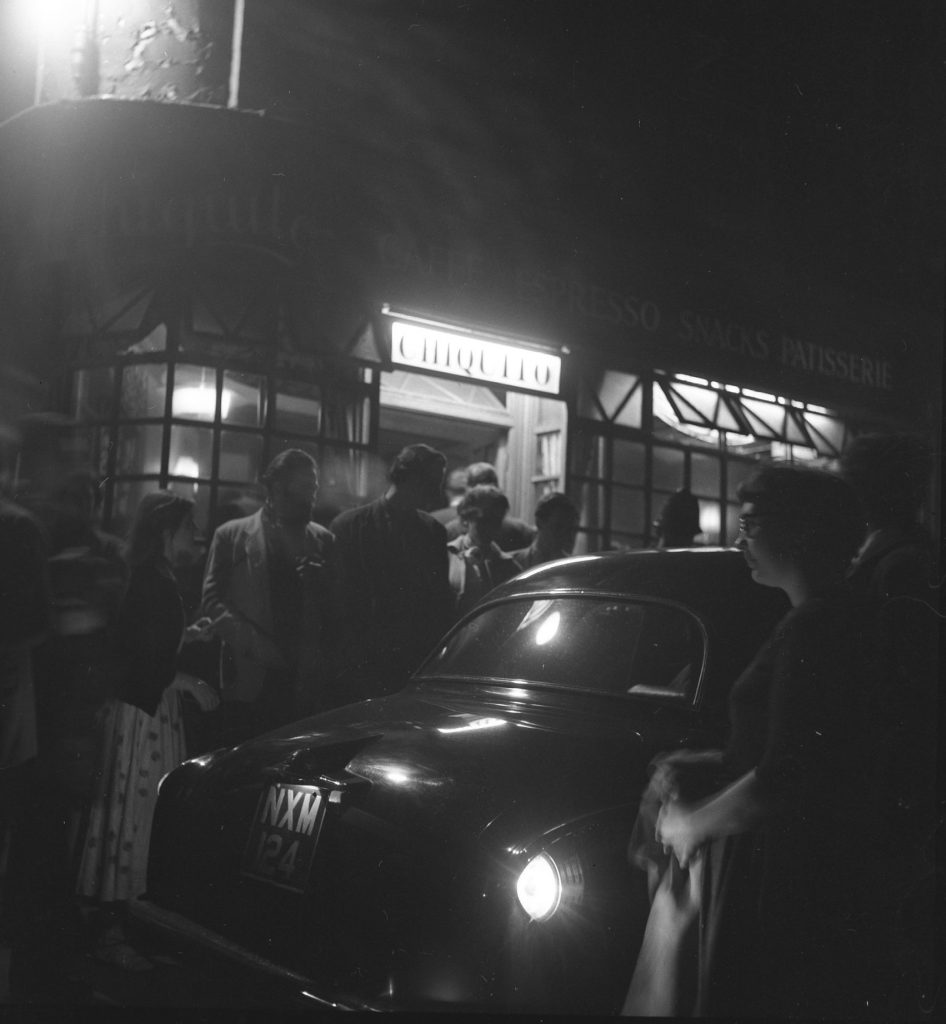
Dated July 1954, a contact sheet in the Adrian Flowers Archive shows both the interior and exterior of Chiquito, a coffee bar and café on Hanway Street, off Tottenham Court Road. There are several photographs of the café exterior, taken at night, with crowds gathered on the pavement. In one, the rear wing of a parked Alvis reflects the photographer’s lights. Most of the photographs were taken inside the coffee bar and show people sitting at tables. However, one shot, taken from above, shows a crowd gathered around the bar where a young man operates a Victoria Arduno coffee machine. The event was a publicity bash to celebrate the arrival of coffee machines in London and the rise of the coffee bar. Although the Bar Italia, founded in 1949, had an espresso machine, it was not until four years later that the media spotlight shone on London’s coffee bars, when Gina Lollabrigida opened Pino Riservato’s Moka bar at 11 Frith Street. The agent for Gaggia in the UK, Riservato then opened a second bar, Moka-Ris on Dean Street, which had a machine installed by 1953, as did the rapidly proliferating bars such as El Cubano in Knightsbridge, and the “2i’s” on Old Compton Street, where Tommy Steele and other young musicians made their name.
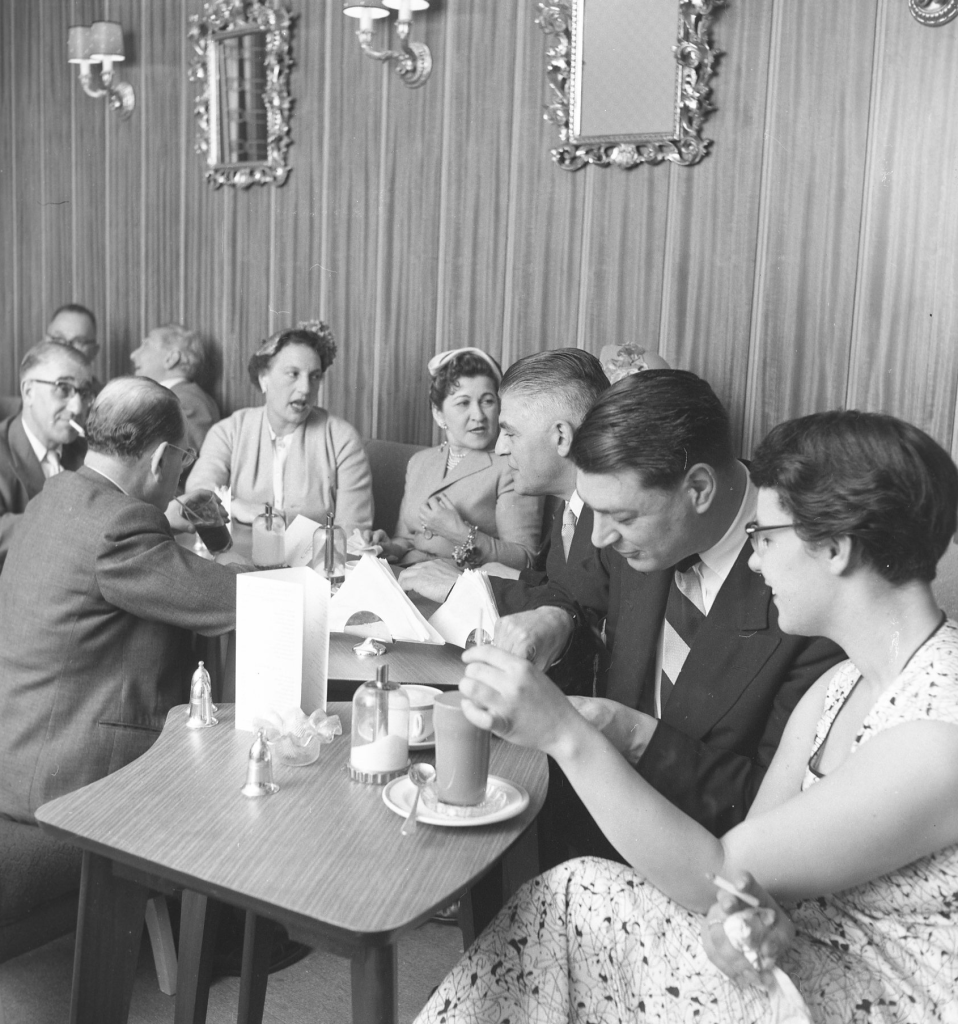
In Adrian’s photographs, on the bar at Chiquito can be seen jugs of hot milk, and small espresso cups and saucers. Unlike other coffee bars that sported Picassoesque ceramics by William Newland, Margaret Hine and Nicholas Vergette, the interior of Chiquito was inexpensively decorated with plants in terracotta pots, brightly patterned fabric and shiplap cladding, while a sign read ‘Café espresso – open till midnight’.
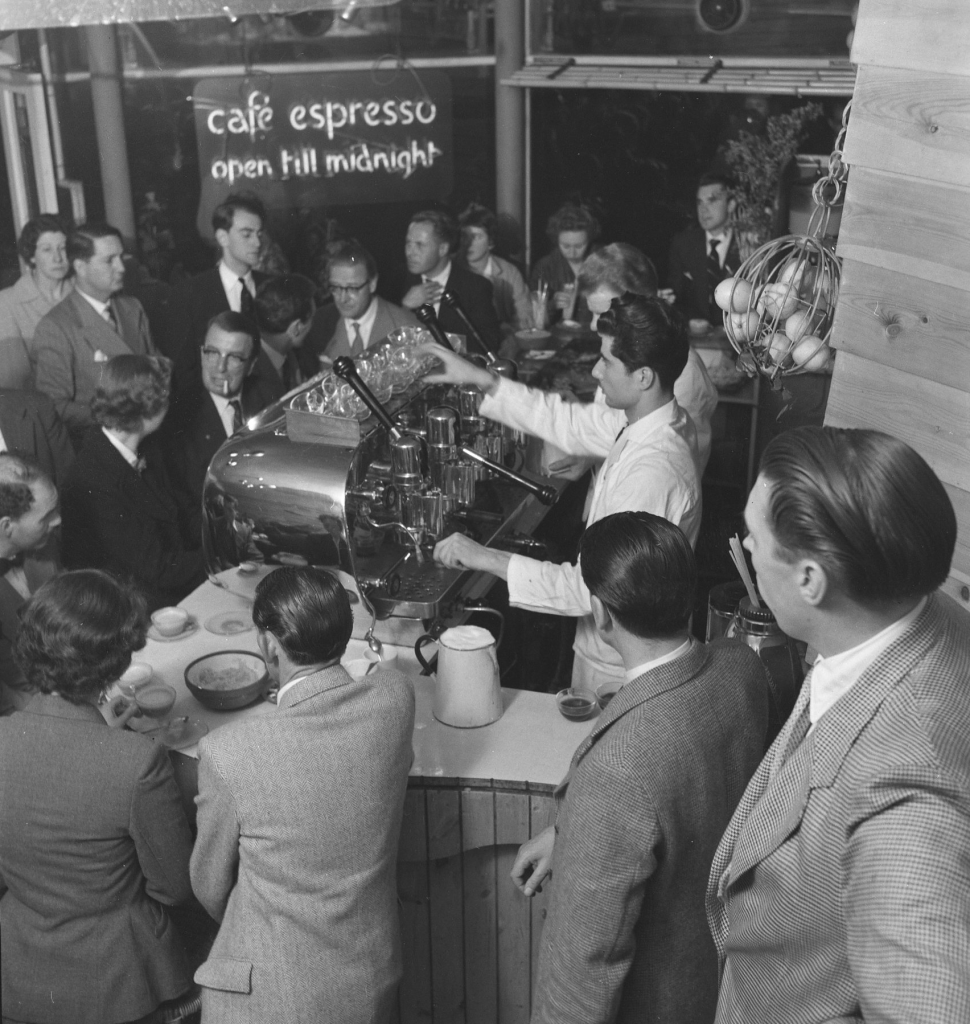
In one photo, Angela, dressed in dark slacks, is seated at the bar and turning to look out onto the street—very much a ‘cool cat’ of 50’s Soho. The photograph is taken from outside the plate glass door, looking in to the brightly-lit interior.
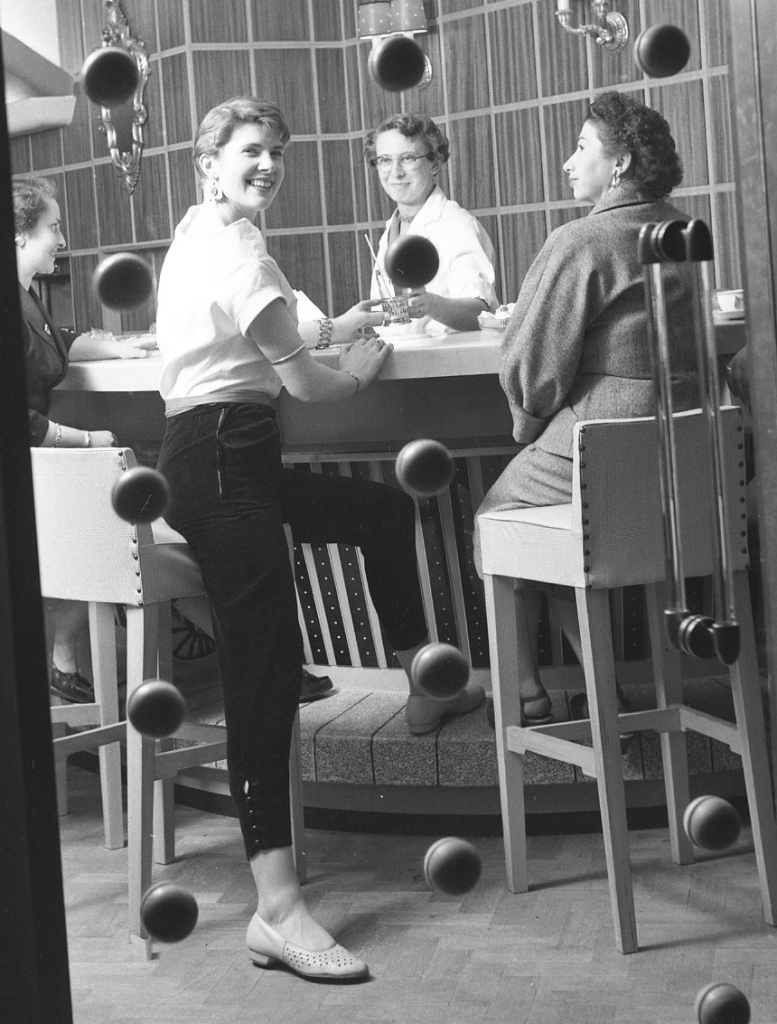
The coffee bar phenomenon in London and other British cities attracted a huge amount of media attention, “and in August 1954, Picture Post ran a feature “A Red-head in Search of Black Coffee” in which Adrienne Corri, promoting her film Make Me an Offer, visited coffee bars in London, including the Moulin Rouge at 38 Hanway Street. It was during this tour that Adrian photographed Corri and Angela Flowers together, and his photographs were used in the Picture Post article.
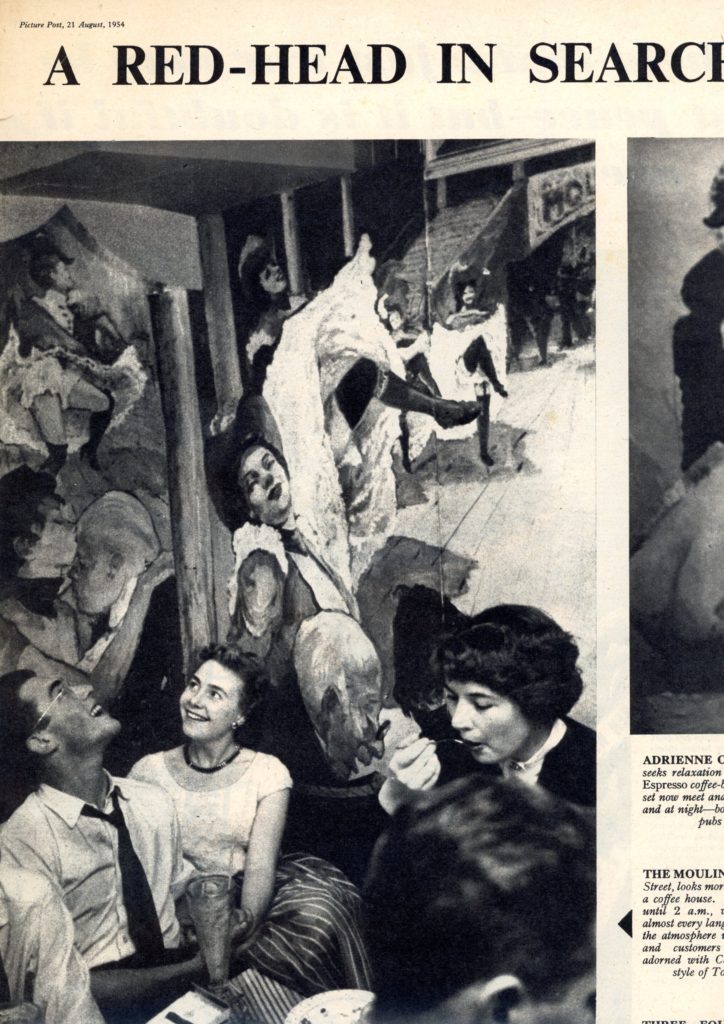


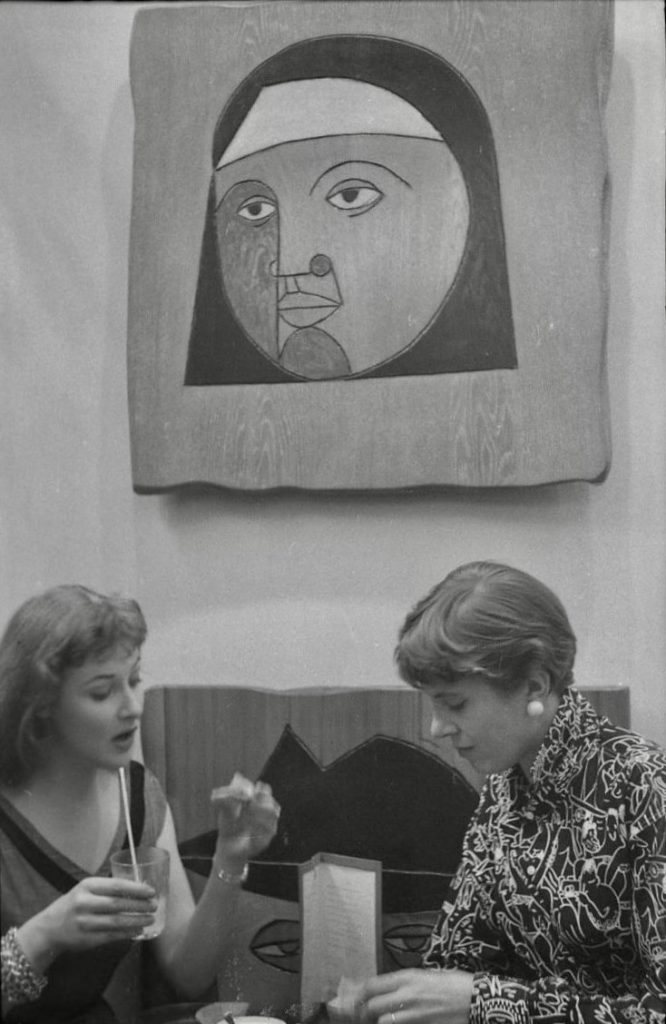
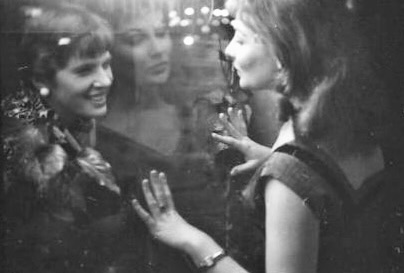
Photograph by Adrian Flowers
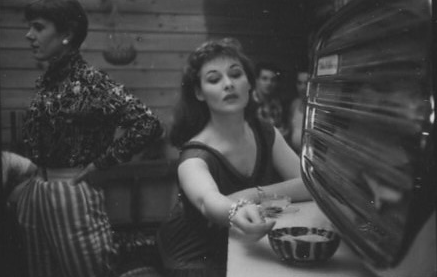
The building at 32 Hanway Street, where Chiquito flourished in the 1950’s, has a long history. Developed in 1819 by a painter and glazier named William Watson, in the late nineteenth century it was for several months the home of the Irish-American artist William Harnett, who was born in Clonakilty, Co. Cork, in 1848. In 1879 Harnett, by then a celebrated still-life painter, was in London, living in Hanway Street. In the twentieth century, No 32 became the Dickens Chop House, and around 1955 it was transformed into the Chiquito coffee bar, one of several Mediterranean-styled cafes set up on Hanway Street. In 1957 Chiquito was licensed for ‘two guitar players and no dancing’, and had a ‘skiffle singing room’ in the basement. In 1959 the café featured in Expresso Bongo, the film that first introduced Cliff Richard to a wide audience.
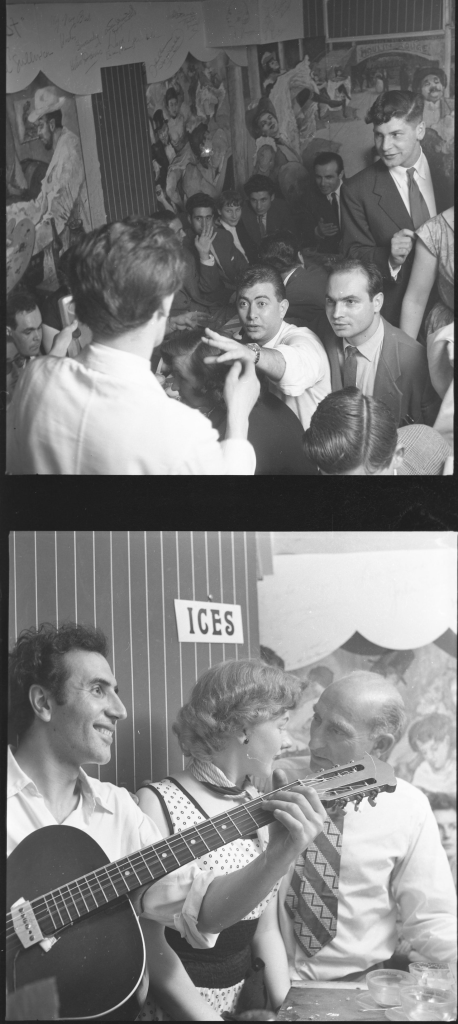
Chiquitos, which was at 32
Ironically, by the time the film was released, Cafe Chiquito’s heyday as a ‘cool cats’ café was over, and the introduction of a striptease act the following year spelled the end of what had been a teen institution. Hanway Street became synonymous with sleaze, with a resident opposing the renewal of licenses to the cafes, on the grounds of ‘nuisances of various sorts ranging from simple urination to sexual intercourse in the doorways’.
Text: Peter Murray
Editor: Francesca Flowers
All images subject to copyright.
Adrian Flowers Archive ©